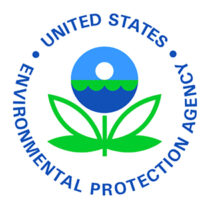The U.S. Environmental Protection Agency (EPA) under the Biden-Harris Administration continues with its swift implementation of the bipartisan American Innovation and Manufacturing (AIM) Act to phase down climate-damaging hydrofluorocarbons (HFCs). HFCs are chemicals that are hundreds to thousands of times more powerful than carbon dioxide (CO2) at trapping heat in the atmosphere. Commonly used in refrigerators, air conditioners, foams, aerosols, and fire suppression, HFCs are being rapidly replaced by cleaner chemicals and more energy efficient technologies spurred by EPA’s actions, which are harnessing American manufacturers’ innovations.
EPA’s AIM Act implementation efforts are part of the Biden-Harris Administration’s whole-of-government approach to reduce climate pollution from HFCs while bolstering the competitiveness of American industries and creating good-paying union jobs. The Administration is taking coordinated steps to support American manufacturing of HFC alternatives, including by leveraging federal procurement power and investing in innovation and testing.
“Congress provided clear, bipartisan direction to aggressively phase down super-polluting HFCs, and the Biden-Harris Administration has stepped up to deliver a program that will ramp up more climate-friendly and energy efficient alternatives, save money, and stop illegal imports,†said EPA Administrator Michael S. Regan. “This will help the United States to meet our ambitious climate goals while allowing American companies to lead the way with innovative technologies.â€
The AIM Act is among the most significant environmental laws enacted by the U.S. Congress in recent years – co-sponsored and passed with strong, bipartisan support and backed by a broad coalition of industry and environmental groups. The law ushers in the use of more climate friendly and energy efficient alternatives that will save money while protecting the environment. American companies are at the forefront of developing HFC alternatives and the technologies that use them, and the AIM Act provides these companies additional opportunities to continue to innovate.
Under the AIM Act, EPA in January established the HFC Allowance Allocation and Trading Program that sets a comprehensive cap on HFCs and phases them down. The phasedown will reduce the consumption and production of HFCs by 85% by 2036, resulting in total emission reductions from 2022 to 2050 that are projected to be the equivalent of 4.6 billion metric tons of CO2 – nearly equal to three years of U.S. power sector emissions at 2019 levels. EPA is also developing a proposed rulemaking to address the methodology for how allowances are distributed in 2024 and later years, and held a stakeholder meeting last month with over 350 participants. In 2024, the HFC phasedown will take its next step and move to a 40% reduction below baseline levels. A global phasedown of HFCs is expected to avoid up to 0.5 °C of global warming by 2100.





